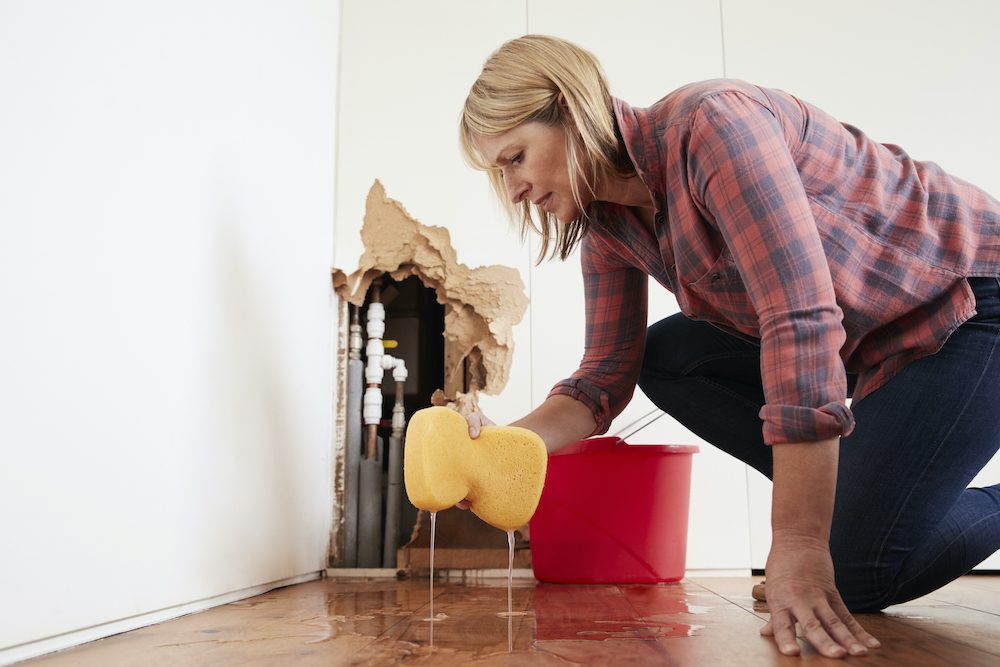The article down below involving Top leak detection hacks is seriously compelling. Don't bypass it.

Early discovery of leaking water lines can mitigate a potential catastrophe. Some small water leaks might not be noticeable.
1. Analyze the Water Meter
Every house has a water meter. Examining it is a proven way that aids you discover leakages. For starters, shut off all the water resources. Make sure nobody will certainly flush, make use of the tap, shower, run the cleaning device or dish washer. From there, go to the meter as well as watch if it will certainly transform. Since no one is using it, there ought to be no motions. That shows a fast-moving leakage if it relocates. Likewise, if you discover no changes, wait an hour or 2 and also examine back once more. This suggests you may have a slow leakage that might even be below ground.
2. Inspect Water Intake
Evaluate your water costs as well as track your water intake. As the one paying it, you should notice if there are any type of disparities. If you find sudden changes, regardless of your intake being the same, it implies that you have leakages in your plumbing system. Bear in mind, your water bill should fall under the exact same range monthly. An unexpected spike in your expense suggests a fast-moving leak.
A consistent increase every month, also with the exact same habits, reveals you have a slow-moving leak that's additionally slowly intensifying. Call a plumber to extensively check your property, particularly if you really feel a cozy area on your flooring with piping below.
3. Do a Food Coloring Test
When it pertains to water intake, 30% originates from toilets. Test to see if they are running correctly. Drop specks of food color in the storage tank as well as wait 10 minutes. There's a leak between the container and dish if the shade somehow infiltrates your dish during that time without flushing.
4. Asses Exterior Lines
Do not fail to remember to check your outdoor water lines also. Must water seep out of the link, you have a loose rubber gasket. One little leak can waste tons of water as well as spike your water expense.
5. Examine and also Evaluate the Scenario
Homeowners ought to make it a behavior to check under the sink counters as well as also inside closets for any bad odor or mold growth. These two warnings show a leakage so punctual focus is called for. Doing regular inspections, even bi-annually, can save you from a major problem.
If you know your residence is currently old, keep a careful eye on your heating systems, pipes, pipes and so on. Look for discolorations and deteriorating as a lot of devices and pipelines have a life expectancy. They will additionally normally weaken due to damage. Do not wait for it to escalate if you presume dripping water lines in your plumbing system. Call a professional plumber today so you don't end up with a horrible mess in your house.
Early discovery of dripping water lines can reduce a potential disaster. Some small water leaks might not be visible. Checking it is a proven method that helps you uncover leaks. One little leakage can waste bunches of water and increase your water bill.
If you believe leaking water lines in your plumbing system, do not wait for it to escalate.
WARNING SIGNS OF WATER LEAKAGE BEHIND THE WALL
PERSISTENT MUSTY ODORS
As water slowly drips from a leaky pipe inside the wall, flooring and sheetrock stay damp and develop an odor similar to wet cardboard. It generates a musty smell that can help you find hidden leaks.
MOLD IN UNUSUAL AREAS
Mold usually grows in wet areas like kitchens, baths and laundry rooms. If you spot the stuff on walls or baseboards in other rooms of the house, it’s a good indicator of undetected water leaks.
STAINS THAT GROW
When mold thrives around a leaky pipe, it sometimes takes hold on the inside surface of the affected wall. A growing stain on otherwise clean sheetrock is often your sign of a hidden plumbing problem.
PEELING OR BUBBLING WALLPAPER / PAINT
This clue is easy to miss in rooms that don’t get much use. When you see wallpaper separating along seams or paint bubbling or flaking off the wall, blame sheetrock that stays wet because of an undetected leak.
BUCKLED CEILINGS AND STAINED FLOORS
If ceilings or floors in bathrooms, kitchens or laundry areas develop structural problems, don’t rule out constant damp inside the walls. Wet sheetrock can affect adjacent framing, flooring and ceilings.
https://www.servicemasterbyzaba.com/blog/how-to-detect-water-leakage-in-walls/

Do you really like more info about Finding hidden leaks? Try to leave a remark directly below. We would be delighted to hear your feelings about this entry. Hoping to see you back again in the near future. Do you know about someone else who is looking into the niche? Please feel free to promote it. Thanks so much for your time invested reading it.